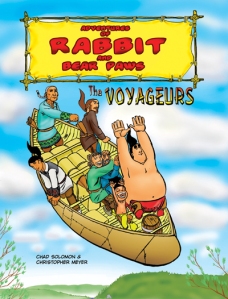The return of Indian entrepreneurshipBy Jack StevensAll these new reservation products are cultural matches, but so is entrepreneurship itself. Markets, trade and importation of raw materials for manufacturing were not concepts brought here by Europeans. Sophisticated Indian trade networks veined the continent long before European contact. During the Hopewellian (200 B.C.–400 A.D.) and Mississippian (800 A.D.–1500 A.D.) periods of Native American history, Indians in Illinois, New York and Ohio traded for conch shells from the Gulf of Mexico, obsidian from what is now Yellowstone Park, copper from the Great Lakes, gold and silver from what is now Canada, fossil shark’s teeth from Chesapeake Bay, and mica and crystal from the Appalachians. Southwestern tribes traded in shells, copper bells, and macaws and parrots from what is now Mexico, and turquoise from what is today California. Indians on the Missouri in the Dakotas traded for marine shells from the Pacific and Gulf coasts.
After the Europeans’ arrival, Ojibwe (not English, Spanish, or French) became the lingua franca of trade up to the 18th century. Great Lakes tribes established portages and elaborate schedules for water-borne transportation of furs and other trade goods. Choctaw-based Mobilian was the language of commerce between tribes and the new settlers on the lower Mississippi and the Gulf Coast. In the Northeast, both the Dutch and English adopted as legal tender the Indians’ wampum, intricately crafted strings of cylindrical beads.
It is likely that the Lakota ancestors of Hunter and Red Cloud traded buffalo meat, hides and horns for food crops at Arikara trading centers along the upper Missouri Valley. The forebears of Simon and TurningRobe may have bargained at inter-tribal markets along the Columbia River, where Nez Perce, Wishram, Wasco, Wyampam, Chinookian-speaking coastal people, and members of other tribes traded wares.
The framers of the U.S. Constitution acknowledged the substance and scope of these indigenous exchange networks by adopting the Commerce Clause to regulate trade “with the Indian tribes.”Comment: Although you occasionally see two tribes meet in movies or TV shows to settle a grievance or arrange a marriage, you rarely see any trade activity. Indians engaged in the beaver trade, guiding Europeans on trade missions...you almost never see anything like that. It's more comfortable to imagine Indians sitting in their tipi villages plotting war or worshiping nature. Either way they're
savages. We don't have to credit them with being clever, resourceful businessmen like the Europeans were.
For more on the subject, see
Early Inuit Were Entrepreneurs,
NCAIED Celebrates 40 Under 40, and
Native Women Are Entrepreneurs.



No comments:
Post a Comment